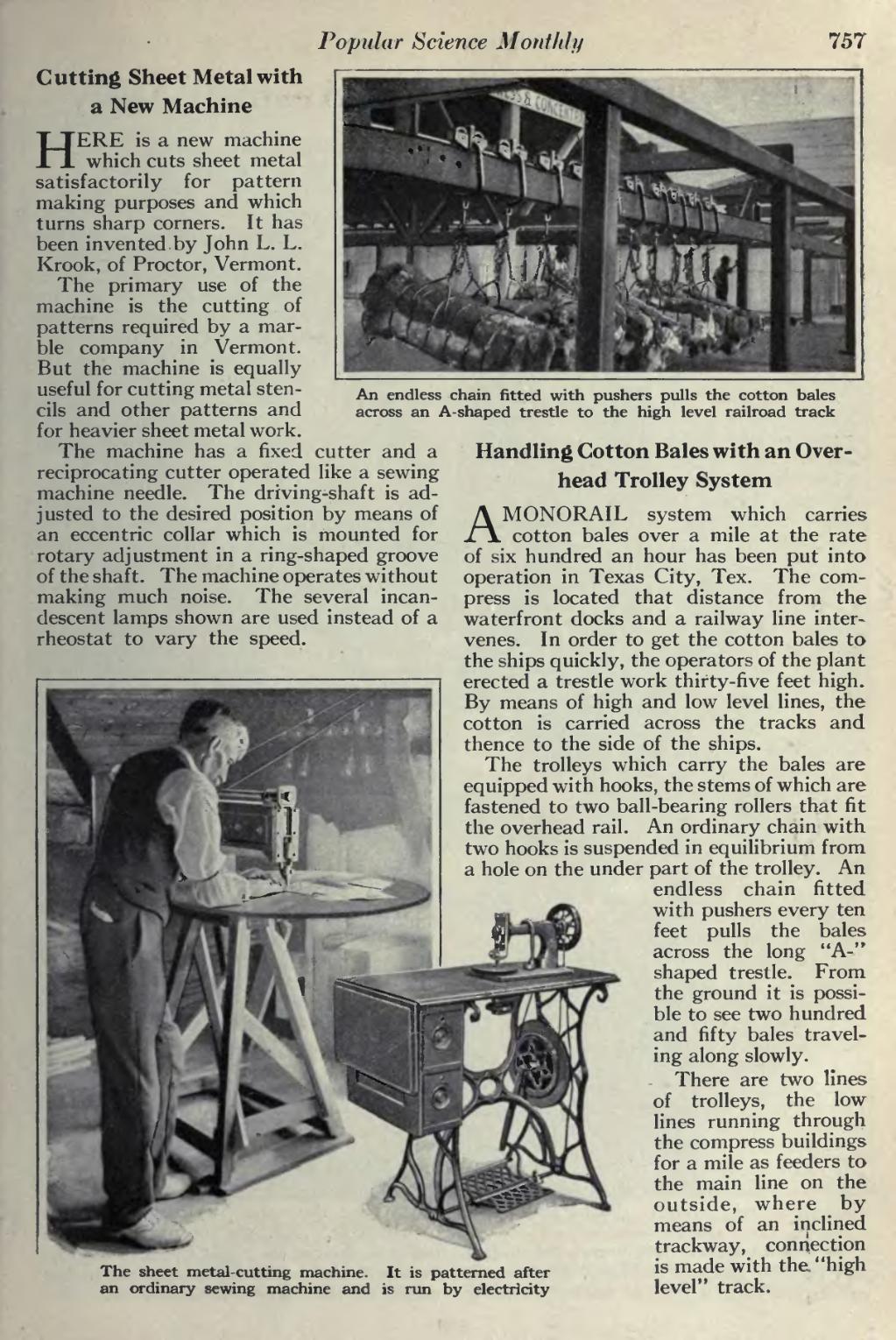Popular Science Monthly
��757
��Cutting Sheet Metal with a New Machine
HERE is a new machine which cuts sheet metal satisfactorily for pattern making purposes and which turns sharp corners. It has been invented. by John L. L. Krook, of Proctor, Vermont.
The primary use of the machine is the cutting of patterns required by a mar- ble company in Vermont. But the machine is equally useful for cutting metal sten- cils and other patterns and for heavier sheet metal work.
The machine has a fixed cutter and a reciprocating cutter operated like a sewing machine needle. The driving-shaft is ad- justed to the desired position by means of an eccentric collar which is mounted for rotary adjustment in a ring-shaped groove of the shaft. The machine operates without making much noise. The several incan- descent lamps shown are used instead of a rheostat to vary the speed.
��~ig
�SlJPKi
�IffiB
1
� �u
_-L.
J m MM
�Jllffl
�1
� ���The sheet metal-cutting machine, an ordinary sewing machine and
��An endless chain fitted with pushers pulls the cotton bales across an A-shaped trestle to the high level railroad track
Handling Cotton Bales with an Over- head Trolley System
A MONORAIL system which carries cotton bales over a mile at the rate of six hundred an hour has been put into operation in Texas City, Tex. The com- press is located that distance from the waterfront docks and a railway line inter- venes. In order to get the cotton bales to the ships quickly, the operators of the plant erected a trestle work thirty-five feet high. By means of high and low level lines, the cotton is carried across the tracks and thence to the side of the ships.
The trolleys which carry the bales are equipped with hooks, the stems of which are fastened to two ball-bearing rollers that fit the overhead rail. An ordinary chain with two hooks is suspended in equilibrium from a hole on the under part of the trolley. An endless chain fitted with pushers every ten feet pulls the bales across the long "A-" shaped trestle. From the ground it is possi- ble to see two hundred and fifty bales travel- ing along slowly.
There are two lines of trolleys, the low lines running through the compress buildings for a mile as feeders to the main line on the outside, where by means of an inclined trackway, connection is made with the. "high
is run by electricity level" track.
�� �
